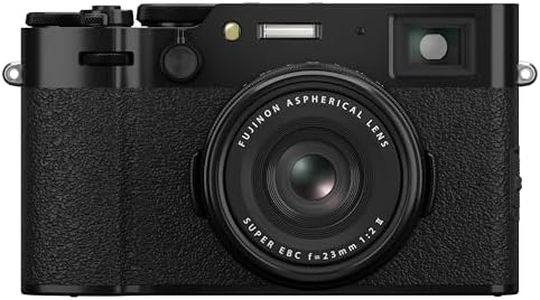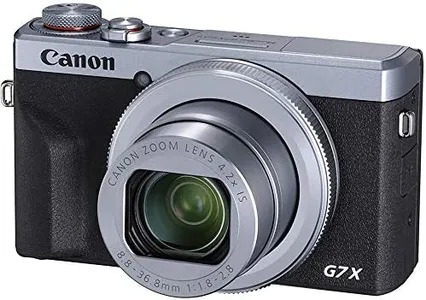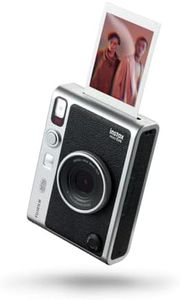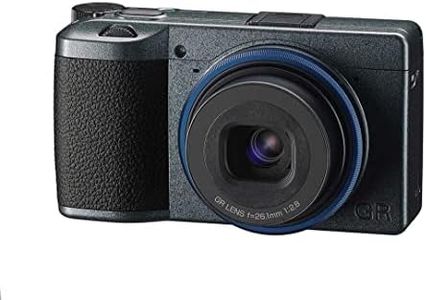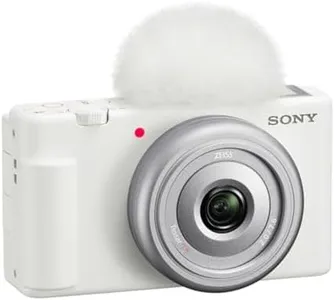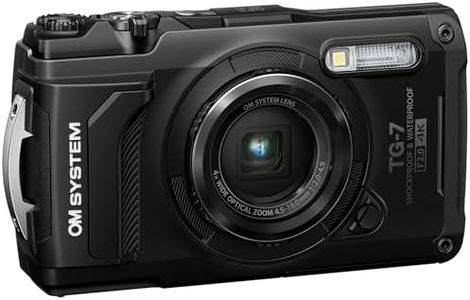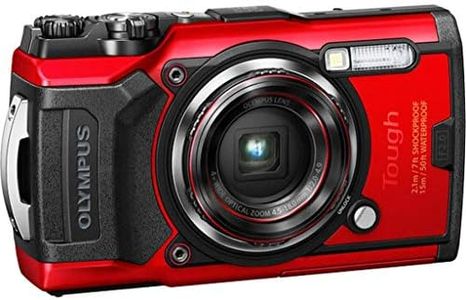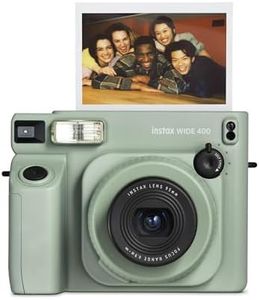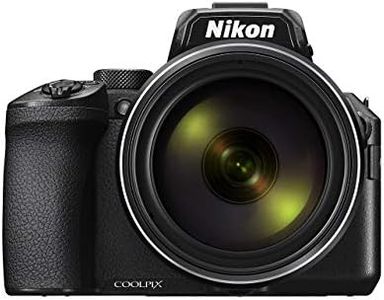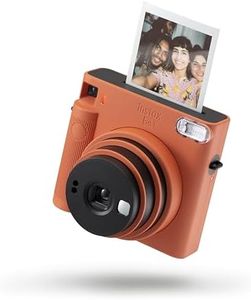We Use CookiesWe use cookies to enhance the security, performance,
functionality and for analytical and promotional activities. By continuing to browse this site you
are agreeing to our privacy policy
10 Best Point And Shoot Cameras
From leading brands and best sellers available on the web.Buying Guide for the Best Point And Shoot Cameras
When shopping for a point-and-shoot camera, it's important to think about what you'll be using it for and what features matter most to you. Point-and-shoot cameras are known for their simplicity and portability, making them great for everyday photography, vacations, and casual events. The key is to balance ease of use with the features you need, so you get a camera that's fun and satisfying to use.Sensor SizeThe sensor is the part of the camera that captures light and turns it into an image. Larger sensors generally allow for better image quality, especially in low light, and can give a shallower depth of field (background blur). Point-and-shoot cameras usually have smaller sensors compared to more advanced cameras, but they still range from tiny sensors (great for portability and casual use) to slightly larger ones (better image quality but often larger bodies). If you mainly take photos in good light and want maximum portability, a smaller sensor is usually fine. If you care more about image detail and want better performance in dim settings, look for a camera with a bigger sensor.
Zoom Range (Optical Zoom)Optical zoom tells you how much closer you can get to your subject without losing image quality. It's expressed as a number like 5x, 10x, or even 30x. A modest zoom range (like 3x to 5x) is plenty for everyday snapshots or travel photos in cities, while a longer zoom (10x or more) is useful for wildlife, sports, or events where you can't get physically close. Think about your shooting habits: if you're often taking pictures of far-away subjects, prioritize a longer optical zoom.
Lens ApertureAperture is how wide the lens can open to let in light, usually expressed as an f-number like f/2.8, f/4, etc. Lower numbers mean more light comes in, which helps in low-light situations and allows for a blurrier background. Cameras with brighter (lower f-number) lenses are better if you plan on taking photos indoors or in evening light. If you'll mostly shoot outdoors in daylight, this is less critical, but a wider aperture does add flexibility.
Autofocus Speed and AccuracyAutofocus lets your camera quickly and accurately focus on your subject. Some cameras are better at this than others, especially when subjects are moving. If you take pictures of children, pets, or sports, look for cameras known for faster and more accurate autofocus. For typical travel or landscape shots, most modern point-and-shoots have sufficient autofocus capabilities.
Image StabilizationImage stabilization helps reduce blur caused by small movements when you’re holding the camera, especially in low light or when using a long zoom. Optical or sensor-based stabilization is usually more effective than digital stabilization. This feature is especially helpful if you tend to shoot in less-than-ideal lighting or use a lot of zoom, as it allows for sharper photos without a tripod.
Screen Size and QualityThe screen (LCD) on the back of the camera is where you compose your shots and review photos. Bigger and higher-resolution screens make it easier to see detail and frame your pictures. Some screens tilt or flip out, which can be handy for selfies or awkward angles. If you often shoot from tricky positions or like to review photos in detail, a larger, adjustable screen is useful. If you just snap quick shots, a basic screen will do the job.
Video FeaturesMany point-and-shoot cameras can shoot video as well as photos. Look at the video resolution, which is often listed as HD (720p), Full HD (1080p), or 4K. Higher resolutions capture more detail. Some cameras also offer features like slow motion, fast autofocus during video, or built-in microphones. If you’ll use your camera for video, consider these options; if not, standard HD video capture may be enough.
Connectivity (Wi-Fi, Bluetooth, NFC)These features let you transfer photos from your camera to your phone or computer wirelessly, and sometimes even let you control the camera remotely. If you love sharing pictures quickly on social media or just want an easier way to get photos off your camera, look for built-in Wi-Fi or Bluetooth. If you'll mostly use a memory card and a computer, this might not be important.
Battery LifeBattery life is often measured in how many photos you can take on a single charge. If you plan to be out all day or don’t want to worry about frequent charging, look for cameras with higher estimated battery life. If your outings are usually short or you don’t mind carrying a spare battery, this is less of a concern.
Size and WeightThe biggest advantage of point-and-shoot cameras is their compact size and portability. Some are ultra-compact and slip easily into a pocket, making them perfect for travel, while others are a bit larger to accommodate more features or bigger sensors. Think about how and where you’ll carry it—if convenience is key, the slimmest models are the easiest to take everywhere.
